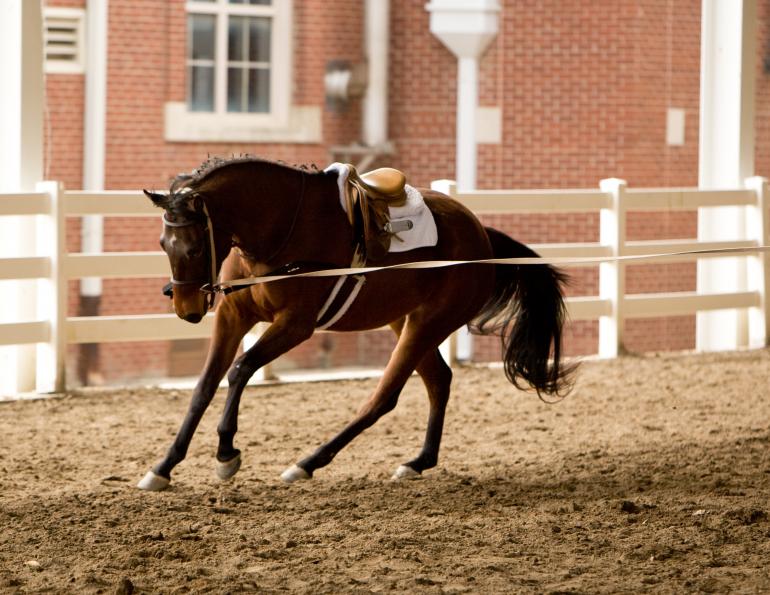365 Days in Horse Country – Lunging Transitions

Imaging having to travel around and around in a circle,
over and over again. It would get pretty
boring, right? Your horse feels the same
way when you make her work repeatedly on the lunge line. You can make lunge-line work more interesting
for your horse while fine tuning her training at the same time. One good way to do this is with transitions.
By using frequent transitions on the lunge line, you make things more interesting for your horse, and you teach her to listen closely for your commands. Her focus will stay on you more completely once she catches on that you are going to ask for something different on a frequent basis. (Evidence of this is how her inside ear is always cocked toward you).
Frequent transitions also teach your horse to collect herself, which is something all horses should know. When you work on transitions in the saddle, they will come more easily because you have practiced on the lunge line.
Start your horse on the lunge line at the walk. Have her do two complete circles, and then ask her to trot. After she has trotted half way around the circle, ask her to walk. Half way around the circle, ask her to trot again.
Repeat this for the first ten minutes of your session. Once your horse is warmed up, you can add cantering to the transitions. Ask your horse to go from the walk to the canter, and then back down to the walk. Let her canter at least one time around the circle before you ask for the downward transition. Change it up by asking her to go from the canter to the trot, from the trot to the walk, from the walk to the canter, and from the canter to the walk.
Half way through your session, change directions and repeat the entire process again. Don’t work your horse more than forty-five minutes total. Less is better when you first start working on these transitions. Be sure to cool her down the last five to ten minutes at the walk.
Michael







